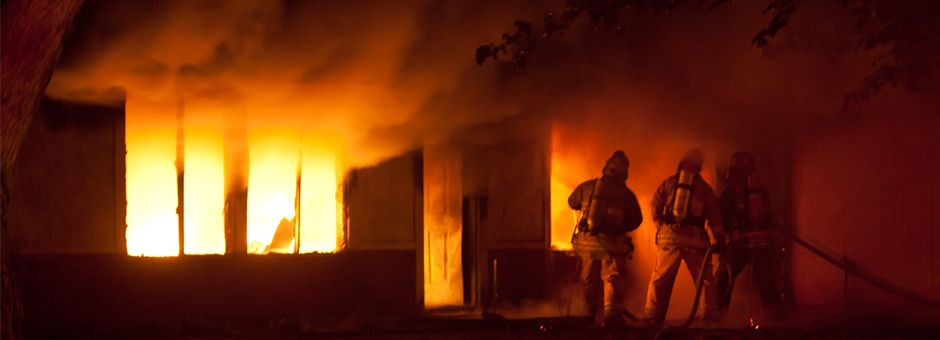Incendiary Crimes Can Lead to Penitentiary Time
Coordinated Efforts Result in Arson Conviction
May 6, 2015

Mere days before his Cantonment, FL, home went up in flames, Lawrence Patterson III obtained a home insurance policy. The blaze totally engulfed his home.
According to Patterson, it started as a vehicle fire in his garage and allegedly rekindled in another part of the house six hours after the garage fire was extinguished. On the evening of the fire, his beloved motorcycle, which he usually kept in his garage, was parked in his driveway, and his pets were not in his house, as they normally would be.
The questionable circumstances surrounding the fire at his home ignited an arson investigation that resulted in Patterson being sentenced to a 10-year prison term.
Arson Awareness Week Seeks to Douse the Hazardous Flames Caused by Firebugs
May 3-9, 2015, is the U.S. Fire Administration’s National Arson Awareness Week, and the organization seeks to educate the public about the widespread damage this crime can spawn. Although arson may seem like an isolated event, each intentionally set fire produces embers of destruction that flicker far and wide:
- According to the USFA, an estimated 282,600 intentional fires were reported to U.S. fire departments each year between 2007-2011, with associated annual losses of 420 civilian deaths, 1,360 civilian injuries, and $1.3 billion in direct property damage.
- The USFA also says that, despite representing 18 percent of all house fires, intentionally set structure fires account for 92 percent of fire-related civilian deaths.
At Patterson’s home, a firefighter who responded to the initial fire sustained injuries after falling through the ceiling of the home. And Patterson’s home insurance company, Ormond Beach-based Security First Insurance Company, incurred substantial investigative and litigation costs as a result of his actions. When insurance companies are forced to pay the extra costs to investigate fraudulent claims, it’s the consumer that ultimately pays the price.
Additionally, the Office of the Chief Financial Officer, Division of State Fire Marshal, Bureau of Fire and Arson Investigations; the State Attorney, First Judicial Circuit in Pensacola; and the Office of the Attorney General, Tallahassee Criminal Appeals Division conducted a comprehensive and costly investigation of their own, with Florida’s taxpayers footing the bill.
Patterson’s case proves, once again, that arson is not a victimless crime.






